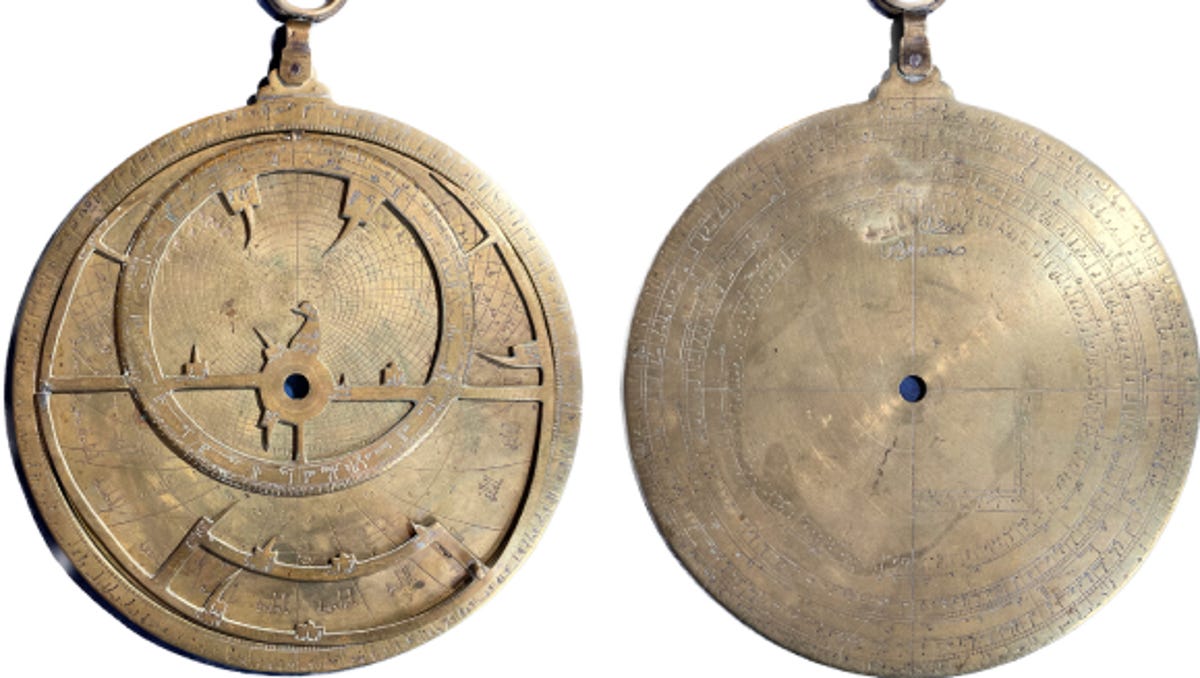A historic find in an Italian museum – a medieval astronomical tool – bears markings in Muslim, Hebrew and Christian languages, suggesting cross-cultural exchange across religion and regions.
An 11th-century artifact sitting in an Italian museum has been identified as a scientific instrument inscribed with an incredible surprise: signs of use by Muslim, Hebrew and Christian users.
Federica Gigante, an expert in Islamic art and scientific instruments at the University of Cambridge in the U.K., saw a picture of the artifact on the website of the museum in Verona, and asked the curators at the Fondazione Museo Miniscalchi-Erizzo about it.
“The museum had not yet started an in-depth study of the object,” Gigante said in a description of the find on the university’s website. “It’s now the single most important object in their collection.”
The discovery was hailed as “extraordinary,” by The Guardian and as “shining light on religious harmony,” by The Times of London.
As Gigante began to study the astrolabe – a scientific tool which dates from 11th century Spain and is used to chart stars and other heavenly bodies – she found Arabic and Hebrew inscriptions, making it a rare find of cross-cultural exchange. Adding to the astrolabe’s rarity, Western numerals were also found as corrections etched into the brass device.
“This isn’t just an incredibly rare object,” said Gigante, whose study was published earlier this month in the journal Nuncius. “It’s a powerful record of scientific exchange between Arabs, Jews and Christians over hundreds of years.”
Whale watching: Photos of male humpback whales copulating gives scientists peek into species’ private sex life
‘Very exciting’ find in Italy shows cross-cultural scientific exchange
Studying the astrolabe at the museum, Gigante said in the university’s write-up that she noticed that “not only was it covered in beautifully engraved Arabic inscriptions but that I could see faint inscriptions in Hebrew.
“I could only make them out in the raking light entering from a window,” she said. “I thought I might be dreaming but I kept seeing more and more. It was very exciting.”
As she analyzed the astrolabe, which she identified as originally from the Muslim-ruled Andalusian area of Spain, she realized it had undergone “many modifications, additions, and adaptations as it changed hands.”
“At least three separate users felt the need to add translations and corrections to this object, two using Hebrew and one using a Western language,” she said.
The Western numerals added to the instrument may be incorrect changes, likely “relating to the latitudes of Cordoba and Toledo” in Spain, she wrote in the research paper, calling the astrolabe “remarkable.”
What is an astrolabe? And why is it important?
Not sure what an astrolabe is? Think of it as “the original smartphone,” which is how Smithsonian magazine described the ancient tool back in 2017.
The astrolabe is “a device that can do everything: Give you the time, your location, your horoscope, and even help you make decisions – all with the swipe of a hand.”
Tom Almeroth-Williams, the University of Cambridge’s research communications manager for the arts & humanities, agrees with that comparison in his report on Gigante’s find on the university’s website.
Akin to “a portable computer,” the astrolabe “provided a portable two-dimensional model of the universe fitting in their user’s hand, enabling them to calculate time, distances, plot the position of the stars and even forecast the future, by casting a horoscope,” he wrote.
This particular astrolabe has Muslim prayer lines and prayer names, “arranged to ensure that its original intended users kept to time to perform their daily prayers,” Almeroth-Williams wrote.
The astrolabe was inscribed with (translated into English), “for Isḥāq … the work of Yūnus.” The names could be the Jewish names Isaac and Jonah written in Arabic, which Gigante said suggests the tool was used in a Sephardi Jewish community in Spain, where Arabic was spoken.
Astrolabes may have different plates for use in different latitudes and this one has one inscribed for North African latitudes, which suggests the object was also used in Morocco or Egypt, Almeroth-Williams wrote.
In the past, the astrolabe made its way into the collection of the Veronese nobleman Ludovico Moscardo (1611–81) before passing by marriage to the Miniscalchi family, Gigante wrote. The family founded the Fondazione Museo Miniscalchi-Erizzo in 1990 to preserve the collections.
“This object is Islamic, Jewish and European, they can’t be separated,” Gigante said.
Follow Mike Snider on X and Threads: @mikesnider & mikegsnider.
What’s everyone talking about? Sign up for our trending newsletter to get the latest news of the day

David Turner is a globe-trotting journalist who brings a global perspective to our readers. With a commitment to shedding light on international events, he explores complex geopolitical issues, offering a nuanced view of the world’s most pressing challenges.






